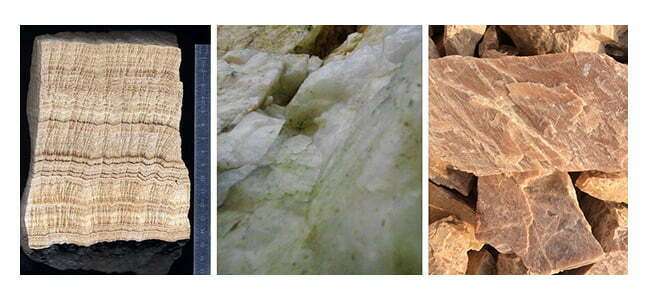Major and Minor Characteristics and Degree of Formation Consolidation
Major Characteristics
Major characteristics might include the fact that the rock is laminated (Figure 1) or shaly, as well as the minerals present (quartz, feldspar [Figure 1], clays, etc.).

Minor Characteristics
Minor characteristics might indicate a minor percentage of accessory minerals such as mica, pyrite or glauconite (Figure 2). Other important sedimentary characteristics and structures, such as the presence of stylolites (serrated surfaces within a rock mass from which mineral material has been removed by pressure dissolution in a process that decreases the total volume of rock) (Figure 3), should be recorded when present.


Although a hardness scale exists for pure minerals, it is not generally used for core descriptions. Instead, the degree of consolidation or unconsolidation, and whether it is friable or well cemented (Figure 4 ), are the characteristics that are noted in describing a core.

 Petro Shine The Place for Oil and Gas Professionals.
Petro Shine The Place for Oil and Gas Professionals.



